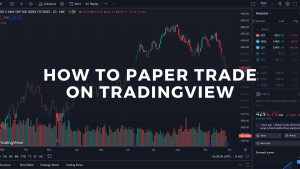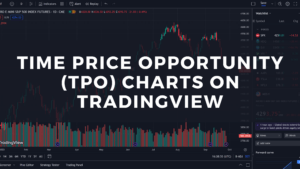This article on futures trading for beginners is the opinion of Optimus Futures.
Making the transition from being a “simulation trader” to one who trades the live market is a necessary step to becoming a seasoned and successful futures trader. Nevertheless, prepare yourself, as the experience can range from sobering to flat-out shocking.
In the live market, you will truly learn the value of your skills and knowledge, the capabilities of your personal discipline against the urgencies of your impulses, and your propensity to learn from your failures or to be deceived by your successes.
Your first time in a live market can be a real “trial by fire,” and you will come out either a winner or a loser. For the market is always right, and even if it isn’t, your response to it will either be right or wrong. It’s that simple. It’s that black and white. It’s also a transition you can’t pass up if you want to become a successful trader. So, make the best of it and trade wisely.
Here is what you can expect in your first year of trading. This is, of course, a composite of futures trading experience compiled from several traders. Some of these issues you’ll face, others you won’t. But it’s important to know what commonly happens with futures trading beginners, if only to avoid these same mistakes.
The First 30 Days
The Shock of the Real
You might have heard from a trading coach that “you should practice on a demo first and only trade live once you’ve become profitable in a simulated market.” Okay, that makes sense to a certain extent, but there are a few critical caveats.
If you swing traded or position traded on a demo, your transition to the live market may be somewhat smoother. But if you day traded on a demo–remember that execution is key in trading small swings–then your transition to the live market may be quite sobering.
You may learn that orders will not so easily be filled, in stark contrast to your demo. If you trade frequently, the more common scenario would be to see your live performance trail your demo performance.
The worst-case scenario, especially if you were running a “demo” along with your live trades, is to see your demo account rise in profitability that’s negatively equal to your losses in a live account (e.g., +$1,000 in your demo account, and -$1,000 in your live account).
This is where you start questioning your entire futures trading experience to date–the markets, your system, your knowledge, and skills–as if everything in the simulated world may have been an illusion–one that’s completely unrelated to the real world.
You Learn How a Double-Edged Sword Can Cut Both Ways
Perhaps you make a huge profit at the beginning. For some reason, beginners gain more confidence than they should if the first few trades or trading sessions start off in that way. If you’re not careful, then you end up with that huge loss that wipes out the profits from your previous trades. This is an important lesson.
Suppose you start off with a big loss. Maybe you traded a size too large, or the market just had a volatile jump against your position. Here is where you will learn whether you’re the type who will “revenge trade” to get your profits back (only to lose more).
If you are smart, you will learn either to manage your position size, take trades with more favorable risk-to-reward scenarios, or you’ll accept the loss as part of the methodology, assuming it’s a profitable methodology, and prepare for the next trade.
You will learn a lot about yourself, whether you have what it takes–in terms of personality, knowledge, or capital–to trade in that particular way (who knows, you might make a better swing trader instead of a day trader, or vice versa).
Ultimately, you’ll learn the benefits and costs of leverage, and whether you have enough risk capital to wield it.
You will also develop respect for the challenges that lay ahead.
After 90 Days (assuming you’re still around)
Do not take the title as a negative. It is, of course, but that is why we are mentioning it. You want to last more than the first 60 days, and so do we, so pay attention.
Betrayed by the Gut
Using intuition to enhance sufficient knowledge and experience is a plus. It’s what skilled professional traders do. But using intuition to compensate for a lack of knowledge and experience can be potentially disastrous. It’s what beginners (especially lucky beginners) tend to do.
If you think you can intuit market turns or market directionality, you will eventually be proven wrong. Trading is an enterprise based on probability, not a prediction. Calculating, acting on, and responding to probable scenarios is first an effort of knowledge, not intuition.
Gaining an intuitive edge happens after solidifying your skills and knowledge. Don’t be fooled into thinking otherwise.
Picking Tops and Bottoms
Granted, there are ways to prudently trade tops and bottoms. They are heavily reliant on risk management strategies, plus an assumption that the win-to-loss ratio may favor frequency (not size) of losses. They are tradable, but if you’re a beginner, you might have better success trading a breakout (upside or downside) following major tops and bottoms.
As a futures trading beginner, you can certainly try your hand with these counter-trend strategies, but be sure you fully understand the larger context surrounding each trade. Do not just go into the market assuming a potential top or bottom.
And if you are day trading, wherein small tops and bottoms occur frequently, know that trying to predict them and losing as a result of the market noise can end up depleting your account (as it often does to beginners who dare make such predictions).
Surviving the First 6 Months
Surviving the first six months in a live market without blowing up your trading account is quite an accomplishment.
The Paradox of (Un-)Learning in a Live Market
Now, looking toward progress, you probably know (from whatever work area you’ve developed skills) that developing a strong sense of trading competence is sometimes more about choosing the few things that work and unlearning what doesn’t than it is about accumulating more knowledge.
This is the power of addition through subtraction. It’s about finding what works best for you. You may not be able to trade a method that works for another trader, but if you find a method that works for you, it doesn’t follow that another trader will be successful with that same method.
This is because every trader has a different mindset, personality, and propensity for different sets of skills, actions, and perspectives.
But here’s the challenge: in order to find out what works for you, you have to try different things. And this means you have to test them in the live market. It also means that you have to take losses (hopefully small) in the live market to find out what does and doesn’t work.
Once you find a method that resonates with your trading personality–one that actually produces profit–stick with it.
Maybe you’ll learn a few different methods. Manage this carefully, as you want to avoid the newbie mistake of jumping from system to system only to end up losing money and not finding a system that works for you.
Yawning As a Trader
There’s a saying that “successful trading is boring.” If you want the thrill of making (or losing) a fast buck, go to a casino, If you want thrills but with no risk, go watch an action thriller. If you want to make money in the market, then keep a cool head and strategic mindset.
Trading is not about thrills. It can be thrilling to spend your money, but when it comes to taking it from the market, you can’t afford to allow your mind to be distracted by emotions that will likely do you more harm than good.
Perhaps you’ll learn this after six months. Some traders never learn it at all. But trust the saying that successful trading can be very boring, or maybe just “calm.” It’s the mindset to which you want to aspire. Besides, the flip side of thrills is negative stress, and neither of them helps.
Hitting the One-Year Mark
Hopefully, after one year, you’ll have grown your account to something much bigger. This is where you need to learn the nuances of position sizing.
Position Size is Everything
Let’s suppose you began your trading career with micro EMini NASDAQ futures. Might it be time to increase the number of contracts you’re trading, or might it be time to go straight to the standard e-minis?
It all depends on whether you can answer some of these questions:
- How do you optimize your position size in relation to the size of your stop-loss?
- How might a large profit impact your daily or monthly loss limit?
- What are the different risk management strategies you can use to take a more defensive or aggressive market posture?
- Can you afford to increase frequency, position size, or market instruments–and if so, how might that affect your loss limits on a daily to a monthly time frame?
Disclaimer: The placement of contingent orders by you or broker, or trading advisor, such as a “stop-loss” or “stop-limit” order, will not necessarily limit your losses to the intended amounts, since market conditions may make it impossible to execute such orders
These questions barely scratch the surface. There’s plenty more to consider. But the point here is that they all concern position sizing. Position size is everything, and we’ve covered this before, giving one hypothetical example of a losing trade that netted one trader a loss while handing profits to another trader who followed the same system but used position sizing to her advantage. This brings us to the next major point.Experience Over Time is Invaluable, But Only If You Learn From It
Remember that experience is not just a question of time. Experience is also your ability to be conscious of your decision-making, your mistakes, and the conditions and methods under which you operate best. It’s all about learning practical skills.
Be aware that many traders who don’t learn from their experiences will likely never progress. Meanwhile, there are traders who, in just months, will have learned far more than other traders who’ve been trading and losing in the markets for years.
Ultimately, it’s up to you–how well you learn, how strongly you can question your own assumptions, and how committed you are to becoming a successful trader. Last year, we released a guide for new traders which is about to be updated. For now, feel free to learn from it. The updated version will be released shortly.
Disclaimer: There is a substantial risk of loss in futures trading. Past performance is not indicative of future results.
















